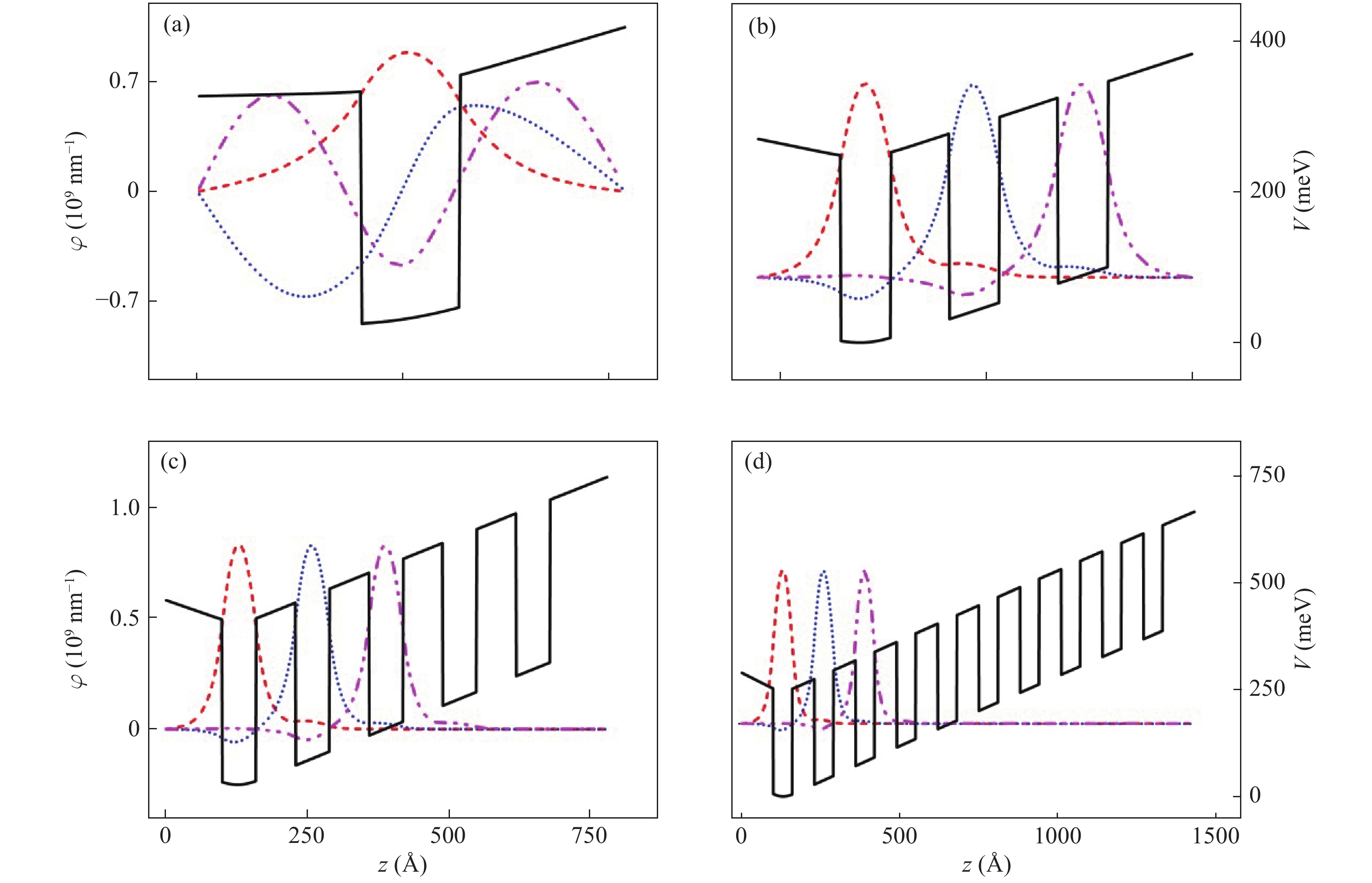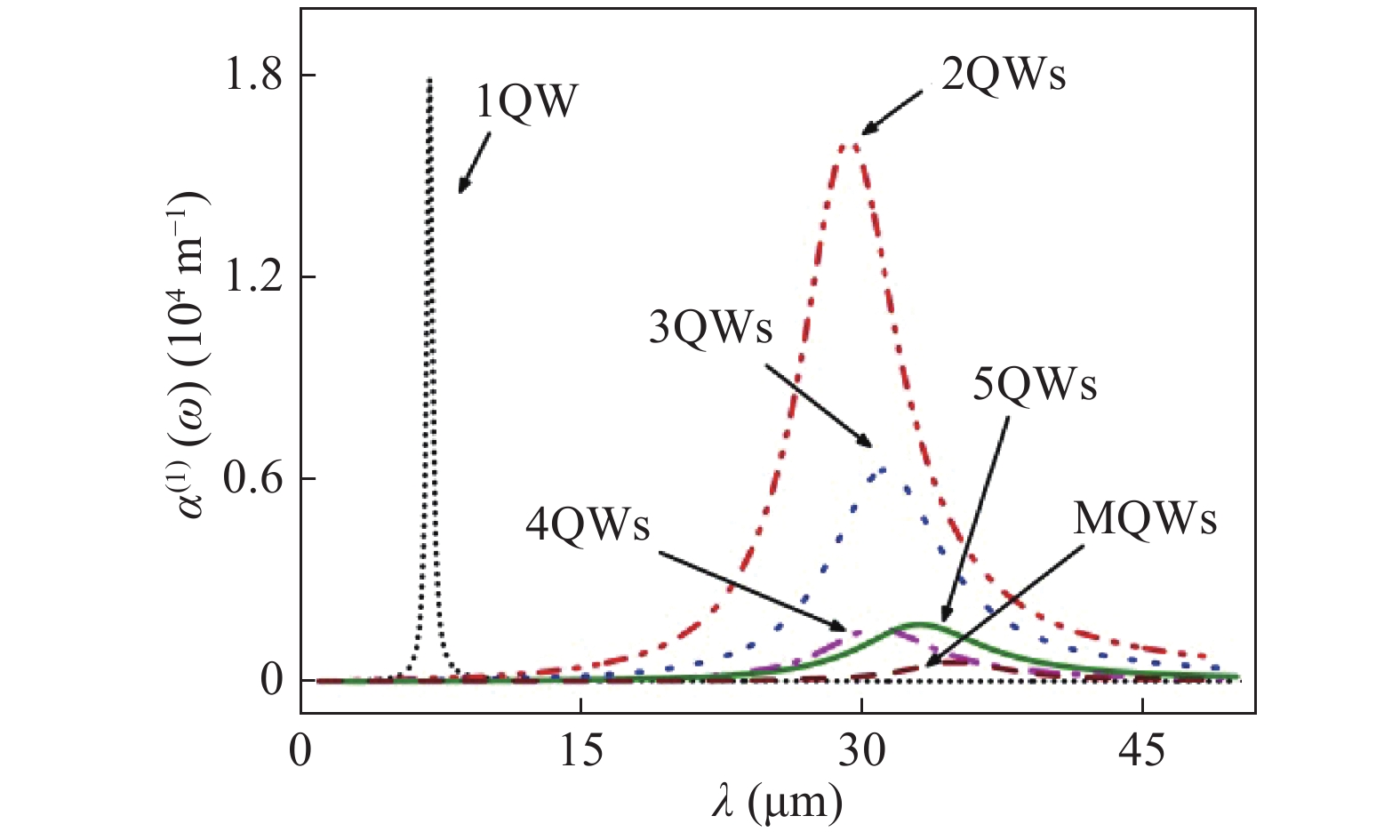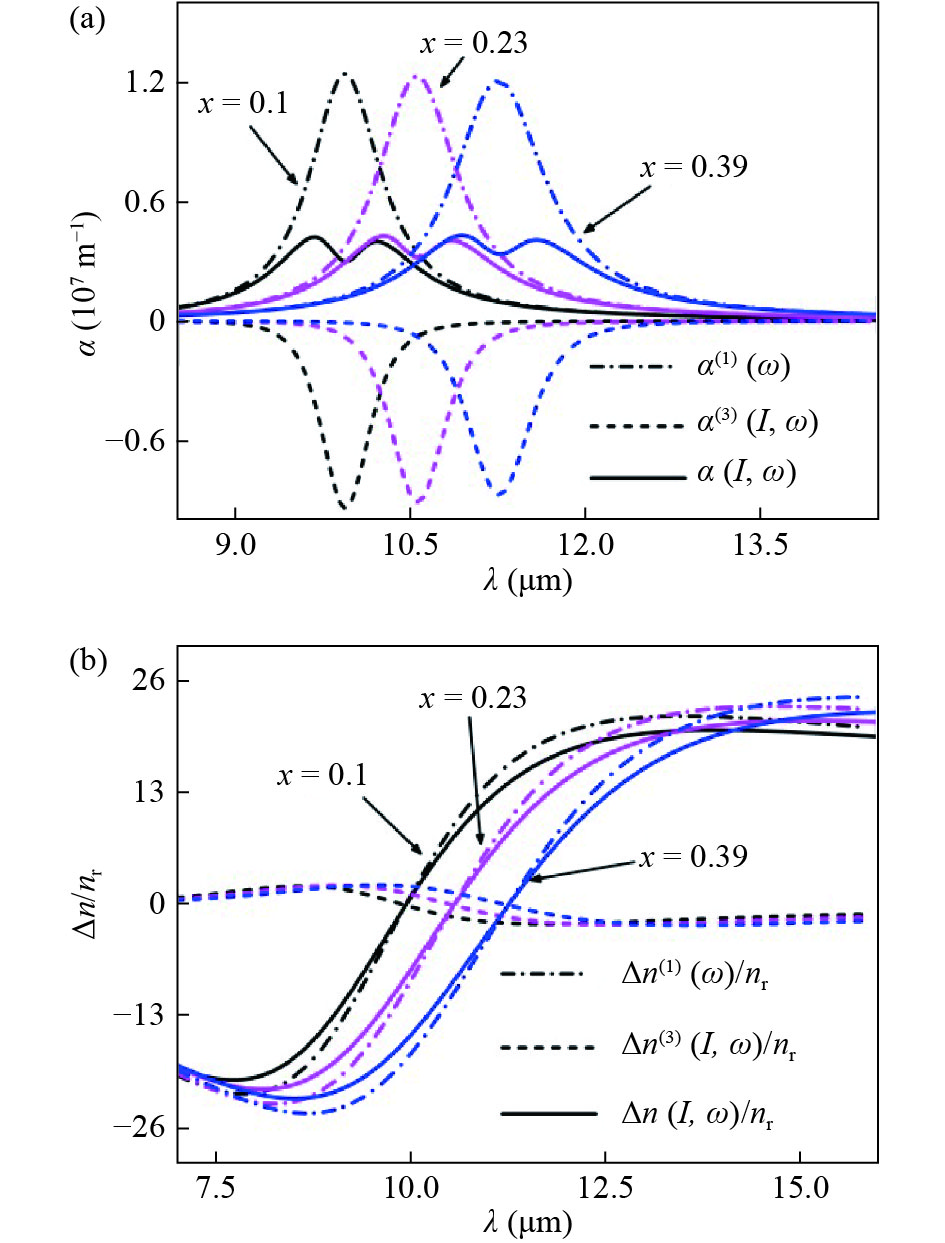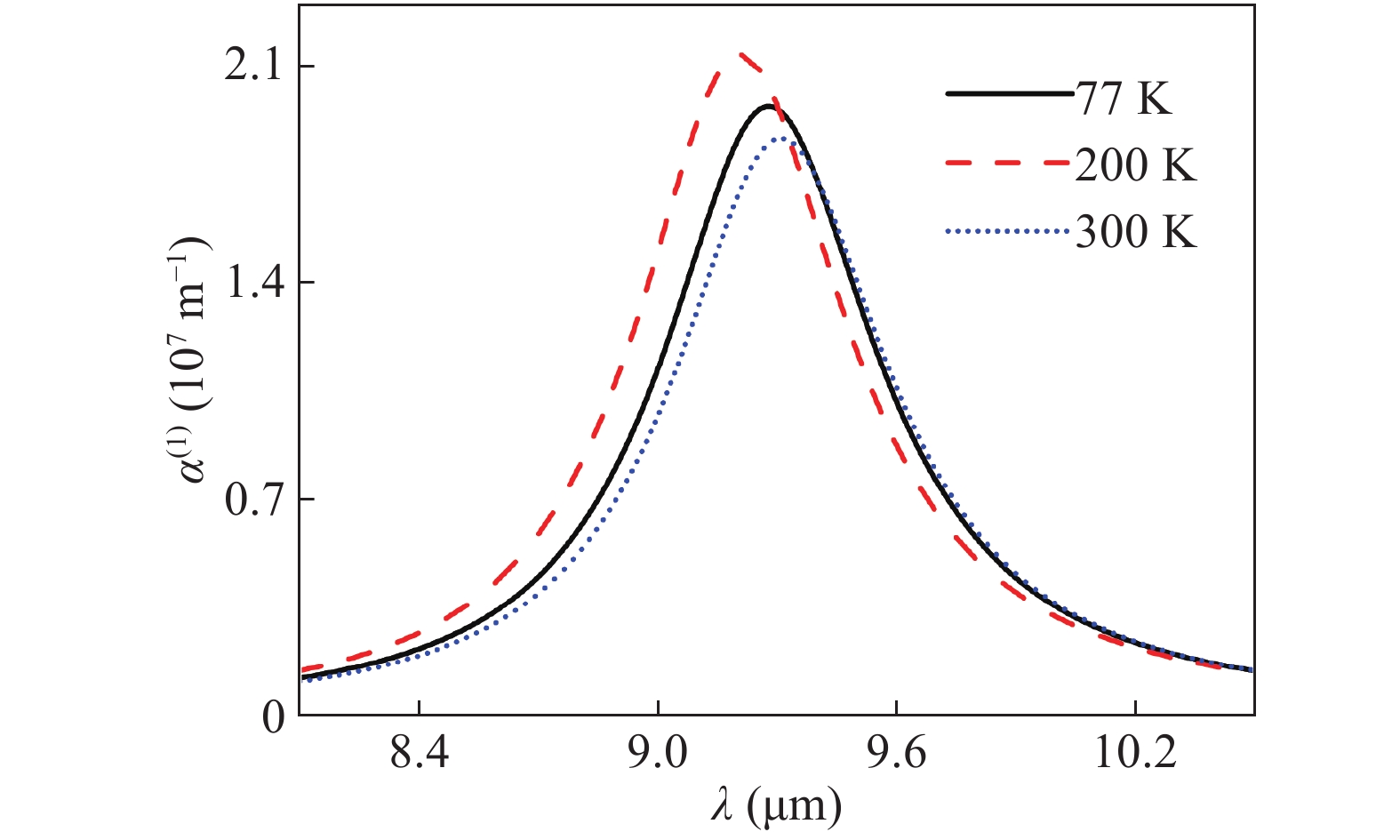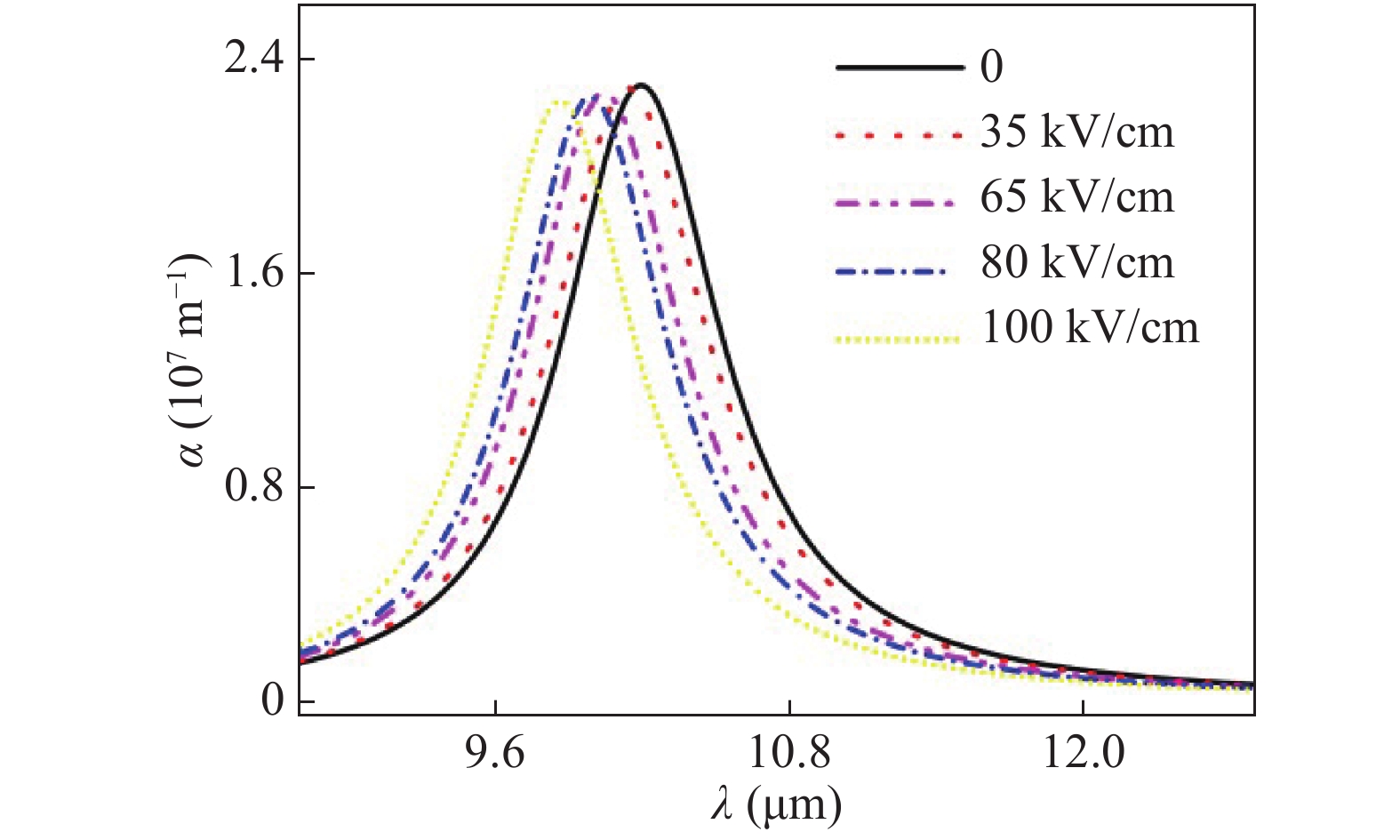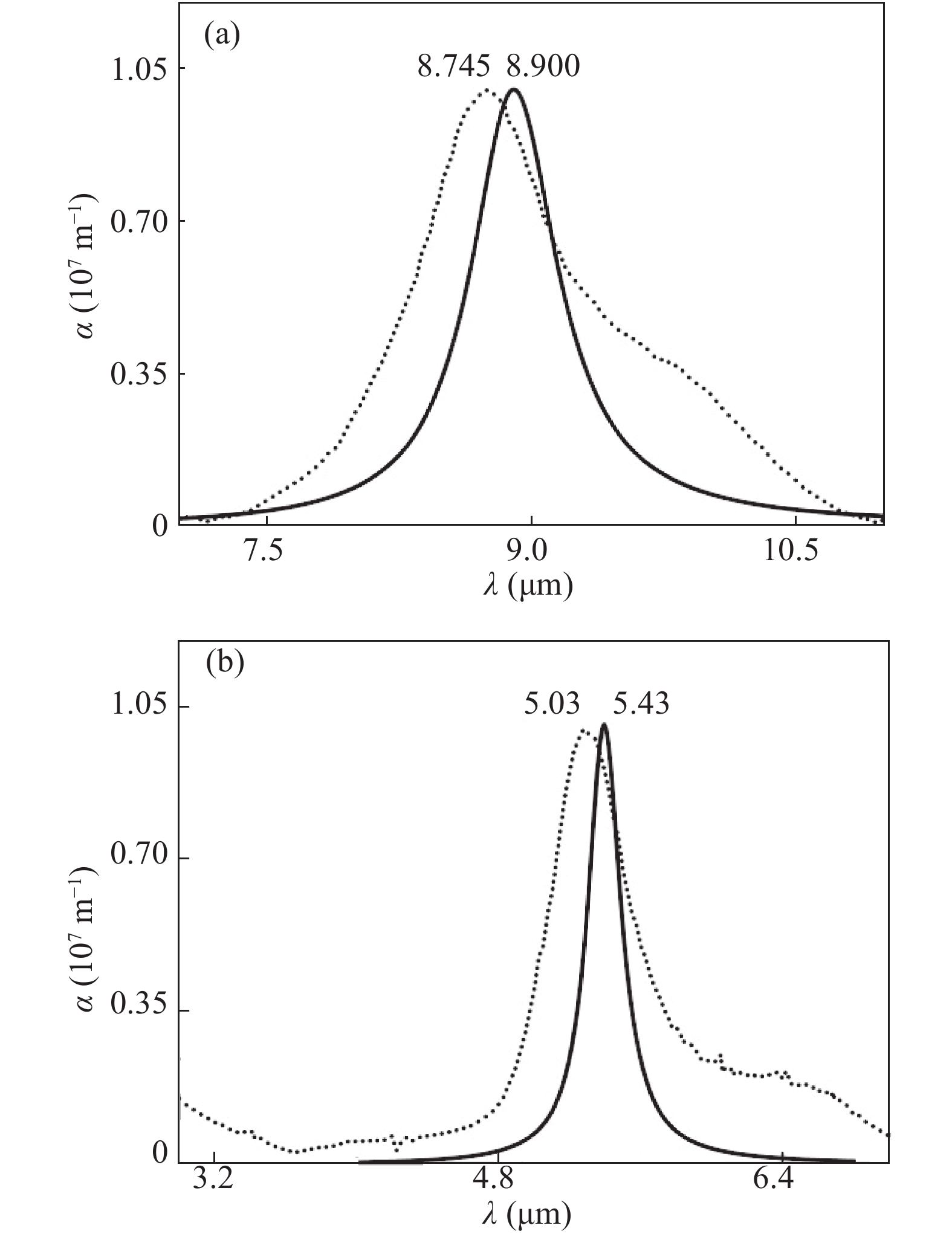| Citation: |
Wenqi Zhang, Zhiping Wang, Shiliang Ban. Optical absorption via intersubband transition of electrons in GaAs/AlxGa1−xAs multi-quantum wells in an electric field[J]. Journal of Semiconductors, 2018, 39(12): 122002. doi: 10.1088/1674-4926/39/12/122002
****
W Q Zhang, Z P Wang, S L Ban, Optical absorption via intersubband transition of electrons in GaAs/AlxGa1−xAs multi-quantum wells in an electric field[J]. J. Semicond., 2018, 39(12): 122002. doi: 10.1088/1674-4926/39/12/122002.
|
Optical absorption via intersubband transition of electrons in GaAs/AlxGa1−xAs multi-quantum wells in an electric field
DOI: 10.1088/1674-4926/39/12/122002
More Information
-
Abstract
Based on the effective mass approximation, the Schrödinger equation and Poisson equation in GaAs/ AlxGa1−xAs multi-quantum wells (MQWs) are self-consistently solved to obtain the wave functions and energy levels of electrons in the conduction band for the ground first excited state by considering a lateral electric field (LEF). Then, the effects of size, ternary mixed crystal, doping concentration, and temperature on linear and nonlinear intersubband optical absorption coefficients (IOACs), and refractive index changes (RICs) due to the transition between ground states and the first excited states of electrons are discussed based on Fermi’s golden rule. The results show that, under a fixed LEF, with increase of Al composition and doping concentration, the IOACs produce a red shift. With increases of both widths of the wells and barriers IOACs appear as blue shifts and their amplitudes increase, but the barrier width change is much more important to affect nonlinear IOACs, whereas increasing the temperature results in a blue shift first and then a red shift of IOACs. When the other parameters are fixed but there is an increase in the LEF, IOACs occur with a blue shift, and the RICs have similar properties. -
References
[1] Almodovar C A, Spearrin R M, Hanson R K. Two-color laser absorption near 5 μm for temperature and nitric oxide sensing in high-temperature gases. Journal of Quantitative Spectroscopy & Radiative Transfer, 2017, 203: 572[2] Joy S R, Mohammedy F M. Spectral broadening and electron–photon coupling in III–V infrared detectors of low dimensional quantum confined system. Infrared Phys Technol, 2016, 76: 722 doi: 10.1016/j.infrared.2016.04.030[3] Sieger M, Haas J, Jetter M, et al. A mid-infrared spectroscopy platform based on GaAs/AlGaAs thin-film waveguides and quantum cascade lasers. Anal Chem, 2016, 88(5): 2558 doi: 10.1021/acs.analchem.5b04144[4] Lin T T, Hirayama H. Variable Barrier height AlGaAs/GaAs quantum cascade laser operating at 3.7 THz. Phys Status Solidi, 2017, 114: 1700424[5] Mickevičius J, Dobrovolskas D, Aleksiejūnas R, et al. Influence of growth temperature on carrier localization in InGaN/GaN MQWs with strongly redshifted emission band. J Cryst Growth, 2017, 459: 173 doi: 10.1016/j.jcrysgro.2016.12.008[6] Mei T, Li H, Karunasiri G, et al. Normal incidence silicon doped p-type GaAs/AlGaAs quantum-well infrared photodetector on (111) A substrate. Infrared Phys Technol, 2007, 50(2/3): 119 doi: 10.1016/j.infrared.2006.10.025[7] Dakhlaoui H, Almansour S, Algrafy E. Effect of Si δ-doped layer position on optical absorption in GaAs quantum well under hydrostatic pressure. Superlattices Microstruct, 2015, 77: 196 doi: 10.1016/j.spmi.2014.11.008[8] Solaimani M, Morteza I, Arabshahi H, et al. Study of optical non-linear properties of a constant total effective length multiple quantum wells system. J Lumin, 2013, 134(3): 699[9] Kong X, Trampert A, Tournie E, et al. Influence of one monolayer thickness variation in GaAs/AlGaAs five-layer asymmetric coupled quantum well upon electrorefractive index change. Jpn J Appl Phys, 2001, 40(2A): 656[10] Herrera R A, Ocampo C A A. Effects of geometry and doping level on dispersion and spectrum in GaAs/AlGaAs quantum well waveguide for the near-IR region. J Nonlinear Opt Phys Mater, 2017, 26(03): 1750031 doi: 10.1142/S021886351750031X[11] Bilel C, Habchi M M, Nasr A B, et al. Investigation of the doping and Stark effects on the band structure and optical absorption of 1.55 μm GaNAsBi/GaAs MQWs. Curr Appl Phys, 2016, 16(3): 340 doi: 10.1016/j.cap.2015.12.023[12] Choi K K, Allen S C, Sun J G, et al. Resonant structures for infrared detection. Appl Opt, 2017, 56(3): B26 doi: 10.1364/AO.56.000B26[13] Jani O, Honsberg C. Absorption and transport via tunneling in quantum-well solar cells. Sol Energy Mater Sol Cells, 2006, 90(18/19): 3464 doi: 10.1016/j.solmat.2006.01.004[14] Gu Z, Zhu Z N, Wang M M, et al. Interband optical absorption in wurtzite MgxZn1−xO/ZnO/MgyZn1−yO asymmetric quantum wells. Superlattices Microstruct, 2017, 102: 391 doi: 10.1016/j.spmi.2016.10.051[15] Nazari M, Karimi M J, Keshavarz A. Linear and nonlinear optical absorption coefficients and refractive index changes in modulation-doped quantum wells: Effects of the magnetic field and hydrostatic pressure. Physica B, 2013, 428(10): 30[16] Lei X L, Birman J L, Ting C S. Two-dimensional balance equations in nonlinear electronic transport and application to GaAs‐GaAlAs heterojunctions. J Appl Phys, 1985, 58(6): 2270 doi: 10.1063/1.335945[17] Guo A, Du J. Linear and nonlinear optical absorption coefficients and refractive index changes in asymmetrical Gaussian potential quantum wells with applied electric field. Superlattices Microstruct, 2013, 64(12): 158[18] Gambhir M, Kumar M, Jha P K, et al. Linear and nonlinear optical absorption coefficients and refractive index changes associated with intersubband transitions in a quantum disk with flat cylindrical geometry. J Lumin, 2013, 143(6): 361[19] Vaughn L G, Dawson L R, Pease E A, et al. Type I mid-infrared MQW lasers using AlInAsSb barriers and InAsSb wells. Proc SPIE, 2013: 307[20] Chi Y, Shi J. Built-in electric field effect on the linear and nonlinear intersubband optical absorptions in InGaN strained single quantum wells. J Lumin, 2008, 128(11): 1836 doi: 10.1016/j.jlumin.2008.05.006[21] Ahn D, Chuang S L. Intersubband optical absorption in a quantum well with an applied electric field. Phys Rev B, 1987, 35(8): 4149 doi: 10.1103/PhysRevB.35.4149[22] Ungan F, Yesilgul U, Kasapoglu E, et al. Effects of applied electromagnetic fields on the linear and nonlinear optical properties in an inverse parabolic quantum well. J Lumin, 2012, 132(7): 1627 doi: 10.1016/j.jlumin.2012.02.033[23] Sari H, Yesilgul U, Ungan F, et al. Intense laser field effects on the intersubband optical absorption and refractive index change in the δ-doped GaAs quantum wells. Chem Phys, 2017, 487: 11 doi: 10.1016/j.chemphys.2017.02.004[24] Vurgaftman I, Meyer J R, Ram-Mohan L R. Band parameters for III–V compound semiconductors and their alloys. J Appl Phys, 2001, 89(11): 5815 doi: 10.1063/1.1368156[25] Ha S H, Ban S L, Zhu J. Binding energies of shallow impurities in a symmetric strained wurtzite AlxGa1−xN/GaN/AlyGa1−yN quantum wells. J Semicond, 2011, 32(4): 042001 doi: 10.1088/1674-4926/32/4/042001[26] Karimi M J, Rezaei G. Effects of external electric and magnetic fields on the linear and nonlinear intersubband optical properties of finite semi-parabolic quantum dots. Physica B, 2011, 406(23): 4423 doi: 10.1016/j.physb.2011.08.105[27] Hutchings D C, Sheikbahae M, Hagan D J, et al. Kramers-Kronig relations in nonlinear optics. Electron Lett, 1990, 26(15): 1206 doi: 10.1049/el:19900780[28] Alves F D P, Karunasiri G, Hanson N, et al. NIR, MWIR and LWIR quantum well infrared photodetector using interband and intersubband transitions. Infrared Phys Technol, 2007, 50(2/3): 182 doi: 10.1016/j.infrared.2006.10.021 -
Proportional views





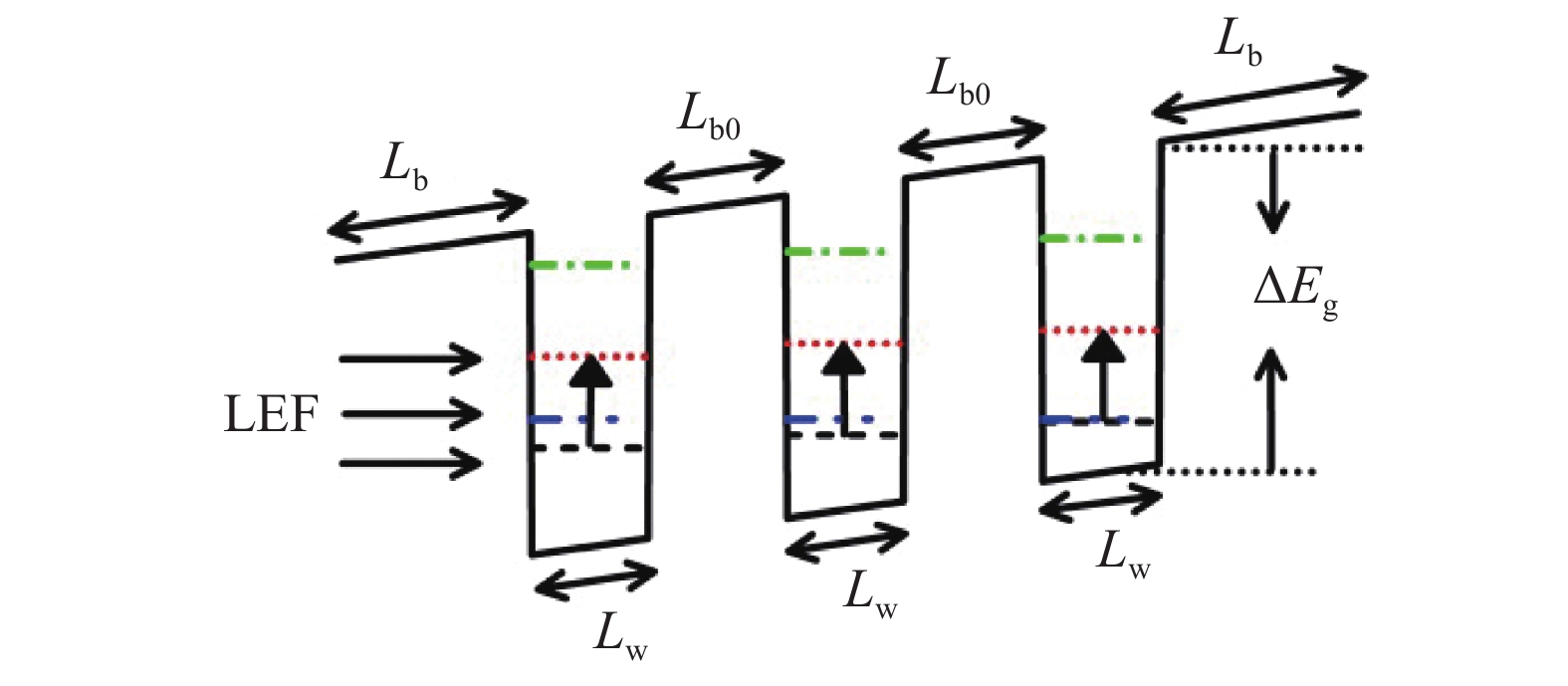
 DownLoad:
DownLoad:
